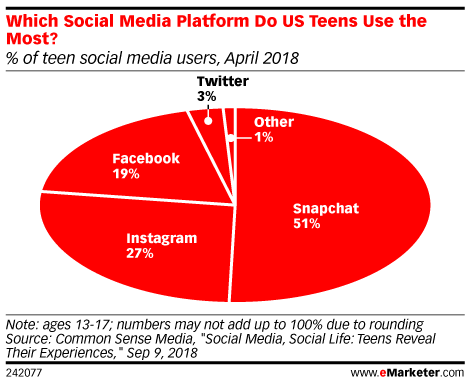Use These 5 Gen Z Behavioral Trends to Inform Your Marketing Strategy

By Anne Felicitas, writer & editor| APR 18, 2019
 Kat Wilcox / Pexels
Kat Wilcox / PexelsEver since millennials entered adulthood and obtained their purchasing powers, marketers have been scrambling to understand the minds of this coveted age group. Simply type the words “millennial” into Google search, and the second keyword appearing in Google’s suggestion field is “millennial marketing.” Clicking that search result reaps a long list of articles promising strategies to successfully market to those people. “The Ultimate Guide to Millennial Marketing,” says one title by renowned marketer Neil Patel. “10 Tips for Millennial Marketing,” says another by Entrepreneur.
Yes, millennials, many of whom are married and raising families or single and working full time, are a lucrative target audience for marketing messages. Yet, there is another age group that marketers should set their eyes on: generation Z.
Many gen Zs have acquired their purchasing powers. According to a 2018 Barkley report, gen Zs aged 16 to 21 spend an estimated $143 billion a year. Evidently, marketers must consider gen Zs in their marketing strategies, but those strategies must differ from the ones tailored to millennials. Gen Zs are a unique group because, born between 1995 and 2012, they have been exposed to the internet and social media since birth—they don’t know a world without it. Retailers need to consider this key fact among other behavioral trends if they want to attract this new pool of consumers.
Many Gen Zs Shop on Amazon
Because gen Zs have been raised in a world with internet, they are likely to be comfortable shopping online. Although there are many online retailers from which they can purchase desired items, a Piper Jaffray study, which Business Insider reports on, found that Amazon is a favorite e-commerce website for this age group. Of the 8,000 teens Piper Jaffray surveyed, 50 percent of gen Z teens said Amazon was their favorite website.
It’s not hard to imagine why Amazon would be preferred. It is, after all, one of the most popular e-commerce sites in the United States. It is so popular, in fact, that many shoppers begin their product searches there. By offering easy access to reviews, Prime subscriptions, and cheaper product alternatives, Amazon gives gen Zs several incentives to shop on its website instead of competitors’.
Gen Zs Still Prefer Brick-and-Mortar Stores
 Andrew Le / Unsplash
Andrew Le / UnsplashAlthough gen Zs are more than comfortable with online shopping, they still prefer to shop at physical retail stores. The ability to see the product and speak to a store personnel makes brick-and-mortar stores a valuable part of their shopping experiences.
Still, gen Zs have not known a world without technology, and for that reason, they expect retailers to incorporate technology into their stores. For example, gen Zs want to have free access to Wi-Fi so they can use Google for any questions they have about the product they want to buy. Using Wi-Fi, gen Zs can also visit review sites to ensure the product will satisfy their needs and to search for coupons online.
Yes, gen Zs may be frequent online shoppers, but they still value physical stores. To attract them, however, retailers must provide technology-driven experiences to suit the needs of this tech-savvy group.
Most Gen Zs Are Active on Snapchat, Not on Facebook
Facebook now has a reputation for being a social media platform for older users. Millennials, their parents, and even their grandparents have accounts. Founded in 2004, the early adopters of Facebook were college students, specifically Harvard attendees where Mark Zuckerberg spent his undergraduate years. Eventually, Facebook opened to college students, then high school students, then to the public. The users who frequented Facebook during its early years have now entered their mid-30s and mid-20s. To this day, Facebook has maintained its millennial users but has not attracted users of the younger generation.
Gen Zs like to spend their time where their parents aren’t: they like to spend time on Snapchat and Instagram. According to a Common Sense Media study, 51 percent of teens use Snapchat, 27 percent use Instagram, and only 19 percent use Facebook. Clearly, Facebook is not popular among the younger generation.
 Image courtesy of Emarketer
Image courtesy of EmarketerThey Watch Videos on YouTube
When gen Zs aren’t scrolling through their Instagram feeds or posting Stories to Snapchat, they’re watching videos on YouTube, as discovered by Pew Research Center, the findings of which are shared by Emarketer.
According to the Pew Research Center’s study, which polled 2,587 teens aged 13 to 17, eighty-nine percent of male respondents and 81 percent of female respondents were YouTube viewers. Of the surveyed respondents, 47 percent said they spent at least three hours per day on YouTube.
At a time when video streaming is becoming as popular as cable TV, if not more, it’s not surprising that gen Zs dedicate several hours of their time on YouTube, where entertaining vlogs, movie trailers, tutorials, and viral videos reside. After launching YouTube Red, which produces bingeable shows à la Netflix, YouTube gives gen Zs even more incentive to spend time on its platform.
Gen Zs Favor Authenticity and Honesty
 Fox / Pexels
Fox / PexelsThere’s one trend that seems to permeate digital advertising: video ads that don’t look too staged and too heavily edited perform well among audiences than clearly rehearsed videos. Peruse the content of the most popular media companies like BuzzFeed and Bon Appétit, and you’ll find that their videos maintain an authentic and unrehearsed feel.
With this existing trend, it’s no surprise that gen Zs favor authenticity and honesty when it comes to the advertisements they see. They want to see real people with honest testimonials. They want to see models of different shapes and sizes, who aren’t photoshopped or airbrushed.
Several big companies have already adopted the new trend of authenticity and honesty. Aerie, for example, launched Aerie Real in 2014, a campaign that strove to feature completely unretouched lingerie models. Dove, too, is another company that values authenticity, featuring women of diverse body sizes and skin tones in their ads.
Although millennials are still a lucrative audience to target, there’s another generation that shouldn’t be overlooked: gen Zs. As this age group approaches adulthood, as they join the workforce or have more control over the allowances their parents give them, gen Zs gain more purchasing power. With the right kind of strategy, there’s money to be made from this group.
Written by Anne Felicitas, writer & editor
The post Use These 5 Gen Z Behavioral Trends to Inform Your Marketing Strategy appeared first on AdvertiseMint.



